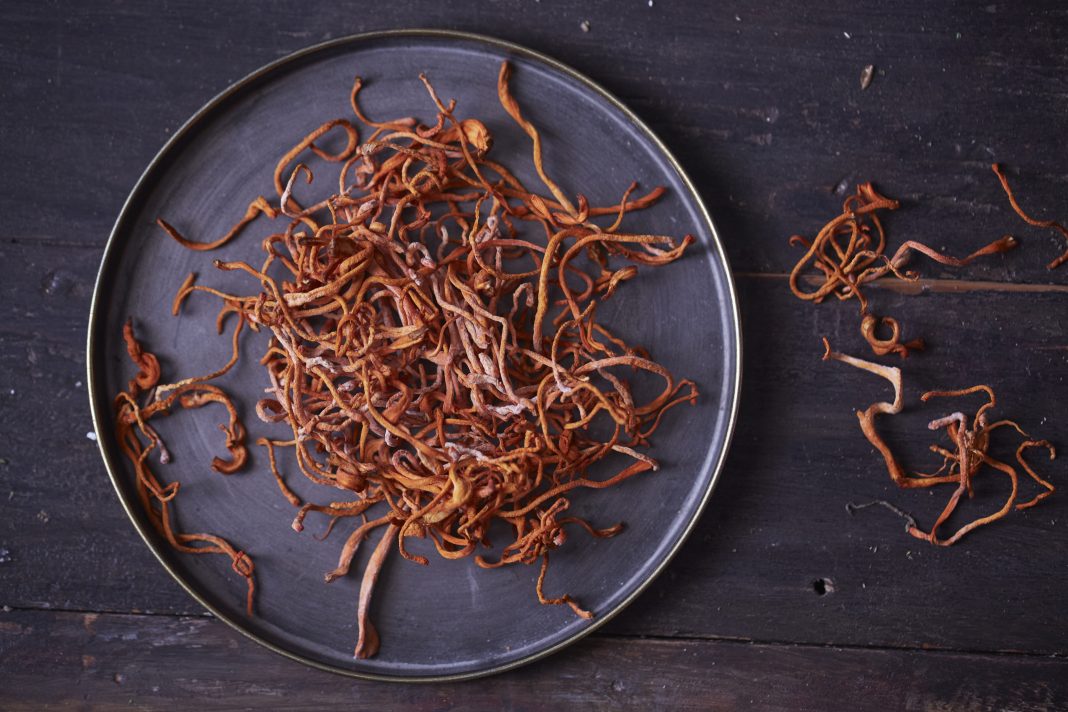In nature, spores of Cordyceps mushrooms infect insects and sprout into fruiting bodies, killing the insects in their feeding frenzy. Despite the mushroom’s gruesome eating habits, the medicinal bioactive compound cordycepin, a nucleoside analog, is its major constituent, necessitating Cordyceps’ controlled cultivation. Cordycepin is a potent antiviral and anti-carcinogen.
Cordyceps is conventionally collected in the wild, however, it is very rare and difficult to find. And, until now, growing healthy Cordyceps in the lab has been a challenge that impedes scientific research on the therapeutic potential of cordycepin. Various groups have tried optimizing conditions for its cultivation to secure its supply, using growth media that contained grains or insects. Although, insects enabled better growth of Cordyceps than brown rice, the type and composition of insects optimal for growth of the mushroom remained unclear.
Nutrient composition varies based on the type of insects used in meals for Cordyceps. This in turn affects the cordycepin content of the mushroom. Mi Kyeong Lee, PhD, professor at the Chungbuk National University in South Korea and Ayman Turk, PhD, from Minia University in Egypt, explored the use of six commercially available edible insects as substrates to determine the optimal conditions for cultivating Cordyceps. The results reported in the journal Frontiers in Microbiology, describe an optimal method to grow these elusive fungi in a controlled setting without losing their potency.
“Cordycepin is one of the cytotoxic nucleoside analogs with complementary therapeutic activities in anti-proliferation and anti-metastasis in cancer cells. Recent findings urge preclinical and clinical studies of cordycepin for the comprehensive treatment of COVID-19,” said Lee, who is the senior author of the study. “The cultivation method of Cordyceps suggested in this study will enable the production of cordycepin more effectively and economically.”
Using crickets, silkworm pupae, mealworms, grasshoppers, white-spotted flower chafer larvae, and Japanese rhinoceros beetles, the scientists cultured Cordyceps for two months and then harvested them to investigate the factors influencing cordycepin production in the mushrooms.
“Cordyceps grown on edible insects contained approximately 100 times more cordycepin compared to Cordyceps on brown rice,” said Lee.
The study showed that Cordyceps cultivated on the Korean rhinoceros beetle (Allomyrina dichotoma) yielded the highest cordycepin—34 times the yield of the compound when the mushroom is cultivated on silkworm (Bombyx mori) pupae.
The investigators also found that the fat content in insects, especially oleic acid level, and not protein content as previously believed, was crucial for cordycepin production in the mushroom. The scientists demonstrated that Cordyceps cultivated on rhinoceros beetles expressed higher levels of the genes cns1 and cns2 involved in cordycepin biosynthesis, than when grown on other insects.
The researchers also showed that adding oleic acid to a low-performing insect food increased cordycepin production by 50%, together with cns1 and cns2 gene expression levels.
“Our research convincingly shows that a potential strategy for boosting cordycepin production in the growth of Cordyceps would be to use insects with high oleic acid content,” Lee said.
Although securing edible insects for Cordyceps cultivation may not be sufficient for industrial scales of cordycepin production, these results offer fresh hope for the development of new medicines that exploit the medicinal properties of cordycepin. Lee said future studies will explore the use of other, more abundantly available insects to further increase the efficiency of Cordyceps cultivation.


